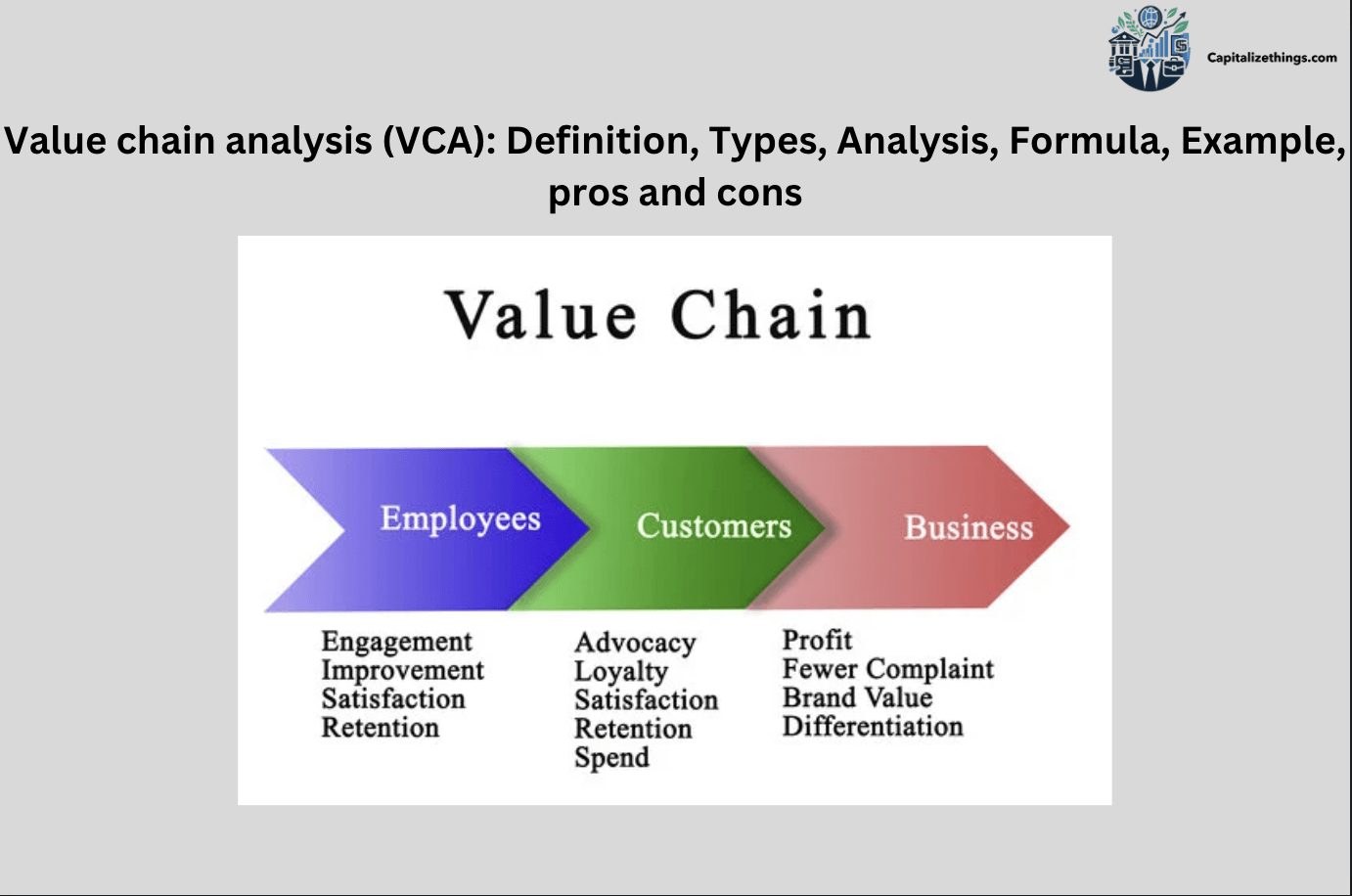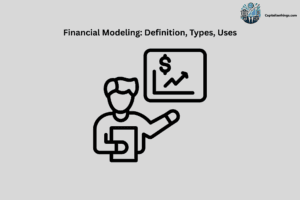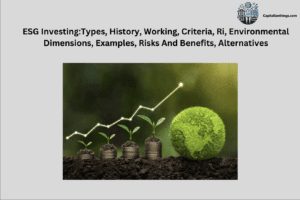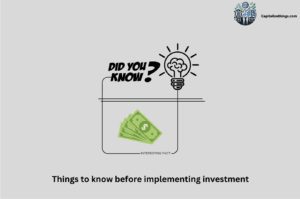Value Chain Analysis (VCA) identifies and analyzes an organization’s primary and support operations that provide value to its outcome to reduce costs or boost differentiation. Depending on what competitive edge a company wants, there are cost and differentiation analyses. The cost advantage technique is utilized when firms compete on cost, and CFOs want to analyze the sources, disadvantages, and cost drivers. The company uses differentiation advantages to create superior products/services.
Examples of companies using the advantage of differentiation VCA are Starbucks and Apple. Both companies sell high-quality, customizable items at premium prices. They attract features, customers with branding, and other non-financial product characteristics.
Although value chain analysis (VCA) boosts profit margin, its usefulness goes beyond income. VCA is about simplifying and aligning. It gives multiple advantages, including improved vendor management, cutting costs, and shorter delivery times. One disadvantage of Value chain is that it is not useful for services businesses.
What is value chain Analysis (VCA)?
Value chain analyzes the full production process to help businesses boost profits and gain a competitive edge. Businesses explore ways to increase production and sales with this analysis. Companies can reduce manufacturing costs and enhance revenue by finding cost-cutting and customer-value-enhancing possibilities.
A strong value chain strategy will help you surpass the competition and become the industry leader. Like sales metrics and analysis, value chain analysis identifies production process issues. Value chain analysis shows your firm how to make more money. Understanding your company’s worth to your audience helps you create a more strategic sales plan and change chain actions to increase revenue.
Value chain analysis helps your firm find the optimal market tactics, not just with your audience. If you wish to sell new financial management programs, your value chain analysis can assist you in setting particular goals and prices. Identify market gaps and use pricing and quality to find niches. Value chain analysis is the foundation for your sales and marketing strategy.
If you’re ready to increase profits and reduce costs, get in touch with us at capitalizethings.com. Call +1 (323)-456-9123 for a free 15-minute consultation with our value chain experts before moving forward.
What is the value chain in cost accounting?
The value chain in cost accounting refers to the entire series of activities and processes involved in creating a product or delivering a service. A product or service’s value chain includes R&D, earnings, and everything. Identifying your company’s value chain operations might help you understand its transactions. Your company can take more shares and share more value with consumers by maximizing value at each stage. Knowing how your company creates value can assist you in comprehending its competitive edge.
What is value chain pricing?
Value chain pricing involves setting prices based on the value added at each stage of the process, from product design to final delivery. From product conception to delivery, the value chain encompasses sourcing, manufacturing, advertising, and distribution. Companies set the best product pricing by measuring the value contributed at each stage to cover costs, make a profit, and stay competitive. This method helps firms cut expenses, boost efficiency, and satisfy customers.
What is a value chain pricing strategy?
A value chain pricing strategy determines costs based on the value contributed at each stage of the value chain, which stretches from production to customer delivery. This technique ensures that each phase provides value to the end product or service, priced accordingly. A value chain is a set of steps that range from product design to consumer delivery. The chain identifies value-added steps, including procurement, production, and marketing. A company analyzes the value chain by examining each business step’s practices. Value chain analysis boosts industrial efficiency to maximize value at minimal cost.
Value chain analysis was popularized by Michael Porter in his 1985 book, Competitive Advantage. Porter argued that understanding how value is created at each stage of the production process can help businesses achieve a competitive advantage.
What is value chain analysis in strategic cost management?
Value chain analysis in strategic cost management evaluates each company’s value chain activity to identify improvement potential. It asks how each stage improves or decreases the value of a good or service.
What is a strategic analysis of the value chain?
A strategic analysis of the value chain is a process having 4 steps:
- Classify and comprehend value chain activities: You must understand every relevant process in your product or service to improve your value chain and get a competitive edge. This covers primary and secondary activities. Repeat this approach for each product or service your organization offers until you understand their activities.
- Determine each activity’s value and cost drivers: Determine each activity’s value and cost drivers. Determine how each activity boosts product or service satisfaction. Determine the costs. Survey your customers to determine the worth of your products or services.
- Compare your value chain to competitors: Knowing your competitors’ performance is crucial in competitive strategy. While competitors’ value chains aren’t public, benchmarking might give you an idea. Compare applicable procedures, business models, and achievement indicators from the competition to yours.
- Find ways to become more competitive: After identifying your chain of value activities, values, and expenses, you can analyze where to gain a competitive edge. For simple value chain analysis, you should use a primary aim like cost reduction. Analyze each activity to cut costs.
What are the three types of value chains?
Following are 3 types of value chains:
- Industry-level value chain: It covers many product production steps from purchase to delivery. Industry-level value chain analysis evaluates acquisitions, mergers, and market entry.
- Firm-level value chain: This VC prioritizes business units, which encompass all corporate operations aimed at increasing product value, gaining an edge over competitors, and profitability.
- Global value chain: Under this VC, global enterprises design, develop, assemble, and market at several locations. The best example is Apple Inc., which makes iPhones in Southeast Asia and the East due to cheap and abundant labor.
What are the 5 primary activities of a value chain?
Following are the 5 primary activities of a value chain are:
- Inbound Logistics
Inbound logistics involves receiving, storing, and inventorying a company’s raw materials, including all supplier ties. For a website, inbound logistics involves receiving and storing manufacturer-supplied products for sale.
- Operations
Operations involve transforming raw materials into final goods or services. This includes converting all inputs to outputs. In the e-commerce scenario above, this would involve labeling, branding, or bundling things to provide value.
- Outbound Logistics
Outbound logistics refers to all efforts to distribute the final item to consumers. This comprises product delivery, storage, and distribution, whether internal or external. It also comprises product storage and shipment for the e-commerce company above.
- Marketing and Sales
Marketing and Sales strategies, including advertising, promotion, and price, aim to increase exposure and attract targeted customers. These efforts persuade customers to buy a product or service. For example, an online retailer can advertise on Instagram or establish an email list for email marketing.
- Services
Service, refund, maintenance, and exchange are included to sustain items and improve customer experience. An e-commerce corporation offers repairs, replacements, or warranties.
What are the key steps in applying value chain Analysis?
The key steps in applying value chain analysis are:
- Find Value Chain Activities
Understanding secondary and primary processes that create your product or service is the first step in a value chain analysis. If your company sells many products or services, do this for each.
- Value and cost activities
After identifying major and secondary operations, determine each business activity’s value and cost to the process. Ask yourself: How do activities improve end-user pleasure or enjoyment? How does it benefit my company? Does using particular materials make the product more durable or luxurious? Do certain features boost the likelihood of network effects and commercial growth for your firm? Each process step’s costs must also be understood. Depending on your situation, decreasing expenses can easily increase transaction value.
- Find Competitive Advantages
Once you’ve assembled your value chain and understood each step’s cost and value, you can assess it for your competitive edge. If your main goal is to cut costs, consider each part of your value chain. Which steps could improve efficiency? Are there any that don’t add value and can be outsourced or deleted to cut costs? If product differentiation is your primary goal, which elements of your value chain give the highest chances? Will the value created warrant the extra resources? Value chain analysis can reveal multiple valuable prospects for your company, which can be hard to prioritize. Improvements with the lowest effort and highest ROI are usually best.
How does value chain analysis improve profitability?
Value chain analysis improves profitability by helping companies identify and cut costs, streamline operations, eliminate waste, and optimize activities that enhance profits. It also helps with strategic decisions and operational improvements by revealing end-user-value-added activities.
By optimizing procedures, businesses can cut costs. Better inventory management, waste removal, and finding cost-effective suppliers and logistics providers would achieve this. These enhancements would boost profitability by improving product or service quality, price, and customer acquisition.
Companies can also strengthen stakeholder relationships by reviewing and optimizing the value chain from product creation to after-sales service. These stakeholders could include suppliers or shareholders. By identifying better suppliers or improving relationships, organizations can ensure quicker delivery of goods and services. This approach improves operations, shareholder satisfaction, and company value, leading to better overall performance.
What is a cost value chain analysis?
Cost value chain analysis evaluates each activity’s cost and the value it adds, optimizing these activities to align with the company’s competitive strategy. It also examines activity relationships. A company’s value chain has core and secondary activities. Companies might compete by offering a unique, superior, or lower-priced product.
Value chain analysis identifies these activities, determines their costs and value, and optimizes them to fit the company’s strategy. According to Harvard Business School, this approach forces managers to view each operation as a phase that adds value to the final product or service instead of simply a cost.
If you are seeking ways to optimize operational costs while maintaining value? Our experts at capitalizethings.com specialize in cost value chain analysis. Call +1 (323)-456-9123 for a free consultation, and let us help you identify opportunities for improvement before you hire us.
How does a company conduct analysis using value chain analysis?
The company conduct analysis using value chain analysis by applying the following steps:
- Define the scope
Clarify your value chain analysis scope. You can choose to study the entire company or a particular item, business unit, or service.
- Determine Value Chain Activities
List all the steps in making and delivering your good or service. Outbound logistics, Inbound logistics, operations, marketing, sales, procurement, service, technology, infrastructure, firm infrastructure, and human resources are typical.
- Assess Primary Activities
Concentrate on value-creating activities. Operations, Inbound logistics, outbound logistics, sales, marketing, and service are primary activities. Assess each activity’s value, resource needs, cost, and customer satisfaction.
- Assess Support Activities
Analyze the support activities that offer infrastructure and resources for the principal operations. Procurement, IT, HR, and firm infrastructure are included. Assess how these activities support primary activities and create value.
- Find Value Drivers
Determine what makes each action valuable. Value drivers in marketing and sales include branding, advertising, and consumer segmentation. Operational value drivers include control of quality, process efficiency, and innovation.
- Cost Analysis
Assess activity and value driver costs. Find key cost drivers that affect the cost structure. This research identifies cost-cutting and efficiency-boosting opportunities.
- Assess Competitive Advantage
Assess how every operation and value driver boosts competitiveness. Find out what sets your organization apart. Think about quality, affordability, quickness, customization, and service.
- Find Strengths and Weaknesses
Based on the investigation, identify areas for improvement and weaknesses that can hamper value creation or a competitive edge. Look for cost-saving, process-improvement, and innovation opportunities.
- Compare Competitors
Check your value chain against rivals’. Find your competitive edge and competitors’ strengths. This examination can reveal opportunities for improvement or distinctiveness.
- Plan Action
Based on your research, create an action plan to increase value generation, address weaknesses, and capitalize on competitive advantages. Prioritize actions by impact and feasibility.
- Implement and Monitor
Run the action plan and track progress. Continuously assess the efforts’ impact. Change the plan as needed to maintain value and competitiveness.
How do you write a value chain analysis?
To write a value chain analysis follow the steps below:
- Use Value Chain Template
A framework is needed to start your value chain workflow. You can use Porter’s value chain breakdown to map your primary and support operations. Process steps should be followed. If you solely sell digital products, procurement and supply chain logistics can apply. You probably use vendors to deliver software or download. You must capture the whole picture for a value chain analysis to be helpful. Using a standard value chain template lets you check each step.
- Sort all value chain activities.
Identify and organize your business’s activities into the template’s boxes. Start by listing all business activities. Know that everything you do adds or subtracts value. Sort your list into primary or support boxes.
- Assess Activity Value and Cost
Each activity’s cost must be calculated now. You make famous mousepads. How much do you pay for raw materials? How much do staff birthday celebrations cost annually? How much do your salespeople spend on client dinners? Finding receipt numbers is laborious but easy. It’s harder to value each activity. This requires some digging. Your workers value what? Your customers value what? They visit and stay—why? Explore this step for answers. Do it:
- Survey customers to learn their opinions.
- Ask staff what they think and what clients and consumers have said.
- See what people say online.
- Do social listening on social media.
- Rank Activities with Metrics
You choose your metrics. You might select leads, sales, email signups, or a 1-10 scale. Examine each exercise and decide:
- How to assess success
- How well it works
Knowing these things lets you rank your activities and see where they land. Does waste reduction need production process improvements? Is there a lousy customer resource management system that is slowing workflow? Are you outsourcing product design or sales to improve? Reduce waste by streamlining processes. Add qualitative data to your analysis to strengthen your business case for systemic change. The bottom line is to start improving after identifying places for improvement!
- Find ways to improve.
After analyzing and ranking your activities, improve. Companies (and value chain analyses!) have different processes. Several steps can boost your profits. Include these
- Automate low-value tasks:
If they need to be done but don’t add value, automate them. Marketing, Sales, and HR staff spend hours on repetitive processes that can be automated with the correct software stack.
- Develop your IT stack:
Find tools that integrate with your stack and give the required data and features. As part of your IT stack, adding an ELD to your fleet can improve real-time data tracking, ensuring compliance with ELD regulations, manual errors, and resource allocation. The correct tools reduce expenses and boost production.
- Reduce wasteful spending:
On your value chain analysis, you can identify useless tasks. A test can never have ended, or processes can have changed. Plan to minimize costs, but check with other teams to be sure they’re not producing value elsewhere. Value chain analysis should be routine in corporate strategy. Schedule this analysis frequently to ensure all costs benefit your customers and team.
How does activity-based analysis affect the value chain?
Activity-based analysis helps managers identify inefficiencies in the value chain and reduce overhead costs. Activities-based analysis helps managers reduce inventories and boost productivity to decrease value chain expenses. Activity-based analysis lets managers.
What is a customer value chain?
The customer value chain models a company’s complete process of delivering value to the customer. Each part of this chain can be improved, but client service plays a crucial role, especially in today’s retention-focused market. With more customers displaying loyalty based on positive experiences, companies must optimize customer support to maintain repeat business and create long-term value.
What is a business value chain?
A business value chain is a strategic framework used by many organizations to enhance operational efficiency. A product or process’s value chain includes material source, manufacture, consumption, and disposal/recycling. Business and operational literature define supply and value chains. Value chain thinking consists of the value the chain creates, especially for end-user customers, unlike supply chain thinking, which focuses on providers.
What are the advantages and disadvantages of value chain analysis?
Advantages:
- Value chain analysis systematically analyzes business operations.
Companies produce products and services for consumers through interrelated operations. By analyzing each process activity using value chain analysis, company executives can improve operations. Company leaders can use this strategy for their own, customers’, or competitors’ companies.
- Value chain analysis uses data-driven insights.
Value chain analysis provides business process insights using high-quality data. It is an objective technique for a firm to decrease expenses and distinguish its business offerings.
- Value chain analysis enhances production and product development.
Value chain analysis can benefit enterprises in many industries, but manufacturing enterprises benefit most. Leaders can use the technique for procurement, manufacture, storage, order fulfillment, and distribution.
Disadvantages:
If firm executives utilize value chain analysis without context, it has drawbacks.
- Value chain analysis can need improvement opportunities.
Value chain analysis concentration on individual processes is both a strength and a weakness. Company executives can overlook opportunities by focusing on specific business procedures. Value chain analysis must be combined with other business analyses to assess risks and opportunities fully. Failing to do so can make firm or business partner connections a liability for analysis.
- Value chain analysis fails with third parties.
Data, continuous improvement, and change are needed for value chain analysis. Company leaders can have internal buy-in, but vendors and partners can be more challenging to convince. Company executives must have an excellent relationship to urge other supply chain owners to make improvements. Ideally, third-party agreements can help.
- Service companies can’t benefit from value chain analysis.
Value chain analysis functions well for product-driven businesses, but service-oriented enterprises vary considerably depending on how employees interact with customers. Service-based firms can benefit more from customer journey strategies and solutions that collect consumer interaction data than value chain analysis.
| Pros | Cons |
|---|---|
| Systematic value chain analysis examines company activities. | Value chain analysis can ignore improvements. |
| Value chain analysis is data-driven. | Third parties could fail value chain analysis. |
| Value chain analysis improves manufacturing and product development. | Value chain analysis is not useful for services. |
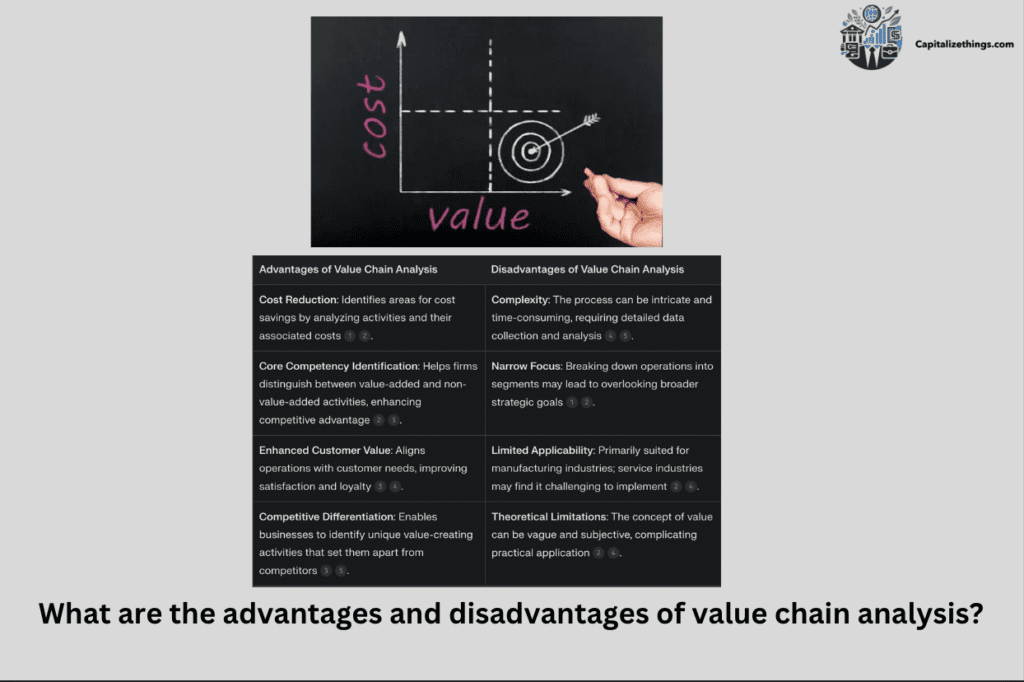
What is cost leadership in the value chain?
Cost leaders reduce manufacturing, overhead costs, and supply chains, allowing companies to undercut competitors while making a profit. Cost leaders can attract customers who are price- grow market share, and control the sector with this strategy.
How can value chain cost analysis help identify cost-saving opportunities?
Value chain analysis reduces costs significantly. Businesses can cut costs and improve efficiency by knowing how to make a product or service. For instance, a clothes manufacturer could cut costs by using cheaper materials, simplifying production, or minimizing waste. This wholly worked example shows how value chain analysis can find cost savings: Consider a bakery that sells various baked items. The bakery’s value chain comprises acquiring materials, mixing and baking pastry, manufacturing products, marketing, and selling them.
How does value chain analysis help identify cost drivers?
Value chain analysis also helps discover cost drivers by examining processes that add value to an item or service, from raw material collection to delivery.
To discover cost drivers through value chain analysis, firms must:
- Determine critical activities in the value chain.
- Evaluate each cost in the value chain.
- Identify key cost drivers that impact expenses.
An in-depth value chain analysis can help companies discover the drivers that most affect costs and optimize them. For example, a manufacturing organization can find that raw material procurement costs drive overall expenses. The corporation can cut expenses and boost profits by switching suppliers, obtaining better rates, or improving inventory management.
Let our professional consultants at capitalizethings.com guide you in applying value chain analysis to discover hidden cost drivers. Get a free 15-minute consultation when you reach us via email or call at +1 (323)-456-9123 and start saving on your operations today.
What is an example of a company using the value chain?
Trader Joe’s is a great example of value chain activities in action. Trader Joe’s, a privately owned grocery shop, has been lauded for its value and competitiveness. Because it is private, many of the company’s strategies are unknown. You can see the five value chain activities in action in a Trader Joe’s store.
- Inbound logistics: Trader Joe’s shelves merchandise during store hours, saving on personnel wages but potentially annoying customers.
- Operations: Trader Joe’s focuses on product development, choosing rare items with high-profit margins.
- Outbound logistics: Unlike many, Trader Joe’s does not provide home delivery but uses in-store samples to create a dynamic experience.
- Sales and marketing: Trader Joe’s relies on its unique branding and indirect marketing to attract a loyal customer base.
- Service: Customer service is prioritized with a courteous staff and a no-questions-asked refund policy.
1. Inbound logistics
Trader Joe’s receives, shelves, and counts merchandise during store hours despite traditional supermarkets. This approach dramatically saves personnel wages, but it can annoy shoppers. The logistics of doing this as a client shop give the strategic message that we’re all in this together.
2. Operations:
A company could leverage the value chain creatively. In primary activity two, “operations” include transforming raw materials into completed products. Since converting raw materials is not a grocery function, operations can mean any food store function. Trader Joe’s essential operation is product development; let’s use that. The company carefully chooses products that are rare elsewhere. More than 80% of Trader Joe’s items are private-label, with the most significant profit margins due to bulk sourcing. Trader Joe’s taste-testing and chef-partnership initiatives maintain product quality and refinement.
3. Logistics outbound:
Although many stores provide home delivery, Trader Joe’s does not. Trader Joe’s facilities are outbound logistics. The corporation has carefully considered how it wants consumers to experience its stores. In-store samplings are one of Trader Joe’s tactics. Several product samples simultaneously create a dynamic atmosphere corresponding to seasons and holidays. The staff prepares and serves new and common foods at tasting stations.
4. Sales and marketing:
In comparison to its competitors, Trader Joe’s undertakes little traditional marketing. However, its entire shopping experience is marketing. Copywriters tailor product labels to the company’s customers. Trader Joe’s unique branding and inventive culture suggest that the business knows its customers well, as it has chosen its preferred clientele and stuck to that model. This indirect marketing of design and image has helped Trader Joe’s differentiate itself in the market and gain a competitive edge.
5. Service:
Customer service is Trader Joe’s priority. Their stores usually have twice as many employees as customers. The courteous, knowledgeable, and eloquent team prioritizes you in their current job. Shoppers are welcome; employees will quickly find your item or answer your question. Additionally, the company has always offered no-questions-asked refunds. Don’t like it? Get your money back.
What is a value chain analysis example?
An example of a value chain includes producing coffee from farm to factory, through several roasting grades, and then offering it as a consumer beverage.
What is an example of a cost leadership strategy?
Cost leadership firms sell high-quality, low-cost goods and services to many clients. Super Shoes, for instance, sells cheap brand-name shoes. Little Debbie snack cakes are another. O. D. McKee founded the brand in the 1930s by selling five-cent sugary treats. Most consumers today consider Little Debbie cakes inferior to Entenmann’s, but there are enough individuals like them that the brand is still around 80 years later.
Cost leadership helped Walmart become the world’s largest company. Walmart promotes price cuts with phrases like Always Low Prices, Save Money, and Live Better. Walmart has the largest US client base. Around 100 million Americans visit Walmart weekly (Zimmerman & Hudson, 2006). Incredible, one-third of Americans shop at Walmart. This vast customer base spans all demographics and social classes.
What is the value chain in managerial accounting?
Value chain management involves processes that add value for product users, requiring costs to be included in the price. These processes require costs that must be included in the product or service price. Many corporate operations benefit end users, and many of these processes include managerial accounting.
Production in a service firm is service performance. Each phase involves managerial accounting! Can you see how crucial the procedure is? Calculating customer prices without determining development and design expenses and putting them into manufacturing, marketing, and distribution would be challenging. Every department in the value chain must communicate. Marketing and production must collaborate with engineers on product design. Why should engineering invest time and money in inventing a product if manufacturing can’t make it or there’s no market?
Think of a purchasing department that needs to discuss component quality with engineering or manufacturing. If they merely look at the lowest-priced component without considering quality, the company can wind up with more manufacturing scrap or consumer complaints. Each step in the value chain is crucial and works together, and accounting for management connects them all.
Which type of accounting focuses on the value chain?
Strategic management accounting focuses on the value chain and uses cost position, product differentiation, and cost advantages to make market judgments. Examining competitive advantage via the value chain is systematic.
What is the difference between value chain analysis and traditional analysis methods?
Unlike traditional analysis methods, value chain analysis expands the accounting object from the internal core to the entire value chain. The 3 main differences between value chain analysis and traditional analysis methods are:
Difference#1:
Traditional management accounting is inward-oriented and serves the enterprise’s internal management and organization. Traditional management accounting solely considers the corporation and its internal units and ignores external issues. Therefore, corporate goals can not be long-term competitive. However, value chain analysis tends to be extroversion because firms are outward-focused.
Company growth strategies must include the uncertainty of the external operating environment and pay attention to external changes to ensure the business can survive and grow in such a tumultuous environment. Thus, the value chain study goes beyond the enterprise, including upstream, downstream, and competitors. Optimization of systems and long-term competitiveness are the initial points for maintaining a competitive advantage.
Difference#2:
The second is traditional management accounting, which focuses on short-term enterprise interests and only analyzes the cost of three project stages—supply, production, and marketing—without considering management operations. However, operating-level value chain management is analyzed. Five primary and four auxiliary operations are included.
We focus on inbound logistics, outbound logistics, operations, marketing and sales, and service. Four support activities are procurement, technological development, HR management, and corporate infrastructure. This divides the value chain analysis into three tiers, one for basic and one for support operations management.
Difference#3:
The third one is standard management accounting, which, although limited, analyzes the firm as a whole or internal unit. The value chain analysis considers the firm, rivals, sales channels, suppliers, and even entire sectors; therefore, the topics are diverse.
What is the difference between a value chain and a supply chain?
The key difference between a supply chain and a value chain is that the supply chain builds and delivers the product, while the value chain adds value along the route. Is a company’s supply chain cost-effective, rapid, and reliable enough to create excellent items and deliver them to clients, producing revenue and profit? Client value is as important as service and product value for company success.
How do Value Chain and Value Stream Costing methods affect decision-making in lean management?
The Value Stream Costing methods and Value Chain have a great effect on decision-making, They provide more precise and relevant cost information to reduce waste, boost efficiency, and increase value generation.
What are the benefits of combining ABC with Value Chain analysis?
The benefits of combining ABC(Activity Based Costing) with Value Chain analysis are:
- Transparent actual costs of activities over value-based accounting
- Continuous enhancement plans
- Find wasteful products
- Recognize the actual cost of goods to inform cost and purchasing policy
- Eliminate unnecessary costs
- Products pay their way—cost and storage become clear
What is the difference between value chain analysis and value stream costing?
The main difference between value stream costing and value chain analysis is that value chains concentrate on business operations, whereas value streams focus on individual corporate processes. A value chain breaks down a company into its strategically appropriate operations to study cost behavior and identify present and new sources to create a unique value offer. Competitive advantage comes from value chain activities.
A Value Stream is a whole process that benefits a consumer and aims to please customers. This word is common in Six Sigma and Lean. Traditional maps of value streams and processes are used to identify and decrease waste, improve efficiency, and drive outcomes.
How can financial advisors apply value chain analysis to improve client profitability?
Financial advisors know they add value beyond portfolio management, but they can need help quantifying how these services help clients succeed. Advisors add value in general groups (e.g., the CFP Board’s Eight Principal Knowledge Areas) and their specific services for clients. While advisers must be broadly conversant with the following topics to pass the CFP Exam, there is room for specialization within each category to acquire expertise and deliver better client service.
At a time when generalist advisors can struggle to differentiate themselves from prospective clients, going deeper with a particular set of value-adds that correspond to the target client’s needs can help advisors grow their business without having to be specialists in every way they can add value!
Unlock the power of value chain analysis with our expert financial advisors at CapitalizeThings.com. Boost your client profitability through tailored strategies – reach out to our team for a complimentary 15-minute consultation at +1 (323)-456-9123.
Conclusion
Value chain analysis (VCA) helps you boost your company’s profit margin by revealing its inner workings. Ask someone what makes something valuable and receive dozens of replies. Business value is objective, while life value is subjective.
Successful firms understand that every process, business structure, and supply chain decision has value. Increasing the value of each engagement and sale can boost long-term earnings. Here comes value chain analysis. Knowing how much value each encounter and transaction provides and working to raise it allows you to refresh your supply and sales chains for the most significant benefit and stand out from your competition.
The two kinds of value chain analysis are Cost advantage analysis and Differentiation advantage analysis. Cost advantage lowers everything but expectations. The goal of cost advantage analysis is to lower manufacturing and product costs. Choosing a cost advantage VCA means having a readily mass-produced product that is valued more as a low-cost one than as a high-quality one. Differentiation analysis emphasizes product quality and brand value over cost advantage. This approach raises production costs, but if it boosts profit, that’s acceptable. For Example, People buy pumpkin spice lattes for pleasure, status, and the perfect fall Instagram photo, not because they’re cheap.
By using value chain analysis, inventory is optimized. One major advantage is that it enhances customer connections, standardizes and improves processes, and boosts competitiveness. One disadvantage of Value chain analysis is that it can ignore some necessary improvements.

Larry Frank is an accomplished financial analyst with over a decade of expertise in the finance sector. He holds a Master’s degree in Financial Economics from Johns Hopkins University and specializes in investment strategies, portfolio optimization, and market analytics. Renowned for his adept financial modeling and acute understanding of economic patterns, John provides invaluable insights to individual investors and corporations alike. His authoritative voice in financial publications underscores his status as a distinguished thought leader in the industry.

